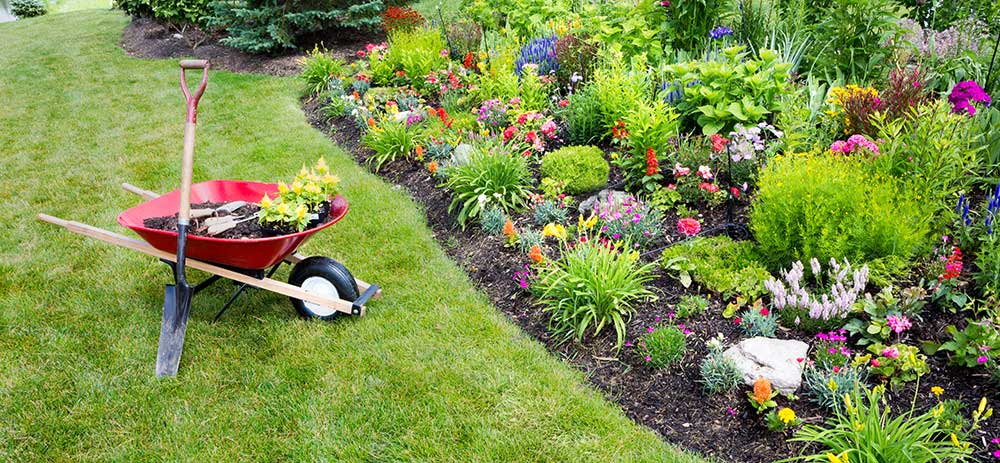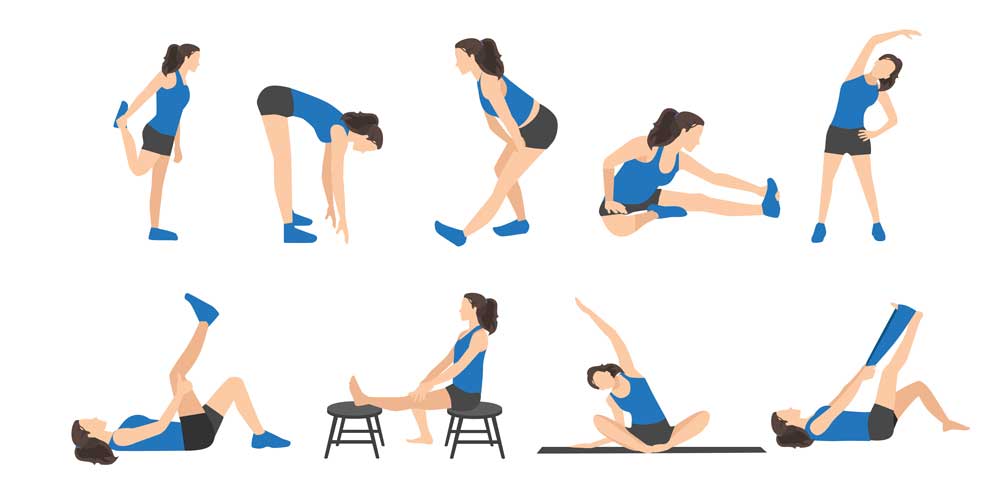How to avoid common yard work injuries.
YEA! We are experiencing longer days and warmer weather.
Very soon, many of us will be spending more time working outdoors on our gardens and lawns. But, before you grab the edge-trimmer, load up the wheelbarrow, and get a bunch of plants, take some time to get yourself ready for safe and fun yard work.

According to Consumer Reports, “every year, while mowing the grass, cutting a branch, or power washing a deck, at least 100 people die and an estimated 143,000 are injured badly enough to require a trip to the emergency room.”
These injuries range from overexertion and pulled muscles, to cuts and amputations from using all kinds of power equipment. There is a disturbing number of injuries associated with a common piece of equipment that doesn’t have a motor at all: ladders. Falls from ladders cause more injuries than all the power equipment from Consumer Reports’ research combined, resulting in broken backs, ankles, legs, and hips. (Check out these three simple steps to stay safe on a ladder from ConsumerReports.org.)
Yard work injuries make spring and early summer our busiest time of the year.
People jump into yard work as soon as it gets warm enough to get outside and get dirty. We all love to get fresh air, and there always seems to be more to do than there is time to do it, so we tend to rush. Don’t do that!

We suggest you take some time to stretch your muscles before you jump into yard work, and pace yourself.
Below are a few easy stretches you can do before you workout or do yard work. Not only does it feel good to do warm up stretches, it gets your muscles warmed up and ready for lifting, digging, raking and gardening.

Many back injuries can be prevented with some simple steps.
- Stretch your muscles. As we already said, before you begin, do some stretches to loosen your muscles. Take breaks to stop and stretch throughout the activity, especially if you start to feel stiff or achy.
- Wear support. If you’re doing more strenuous physical activity than you usually do, wear a supportive back brace.
- Remember to lift correctly. When you go to lift something heavy, squat, hold the object close against your body and lift with your legs, not with your back.
- Stand up often. If you’re planting flowers or pulling weeds, take regular breaks to stand up and give your spine a break. Also, instead of bending at the waist to weed and plant, try sitting on a very low garden stool close to the ground.
- Know your limits. Don’t do something you’re not physically capable of doing. Ask for help!
- Listen to your body. If you feel pain, stop what you’re doing. Stretch and evaluate what’s going on before you start again.
- Get adjusted before you start! Of course, we need to mention that getting adjusted will help you avoid injuries. When your body is in alignment, it works better.
The bottom line is just plain and simple:) Take care of your body and your body will take care of you. If you need help before (or after) you head outside, contact us for an appointment.
We’re here to help!

Dr. Hughes, Dr. Shannan, Dr. Harris




